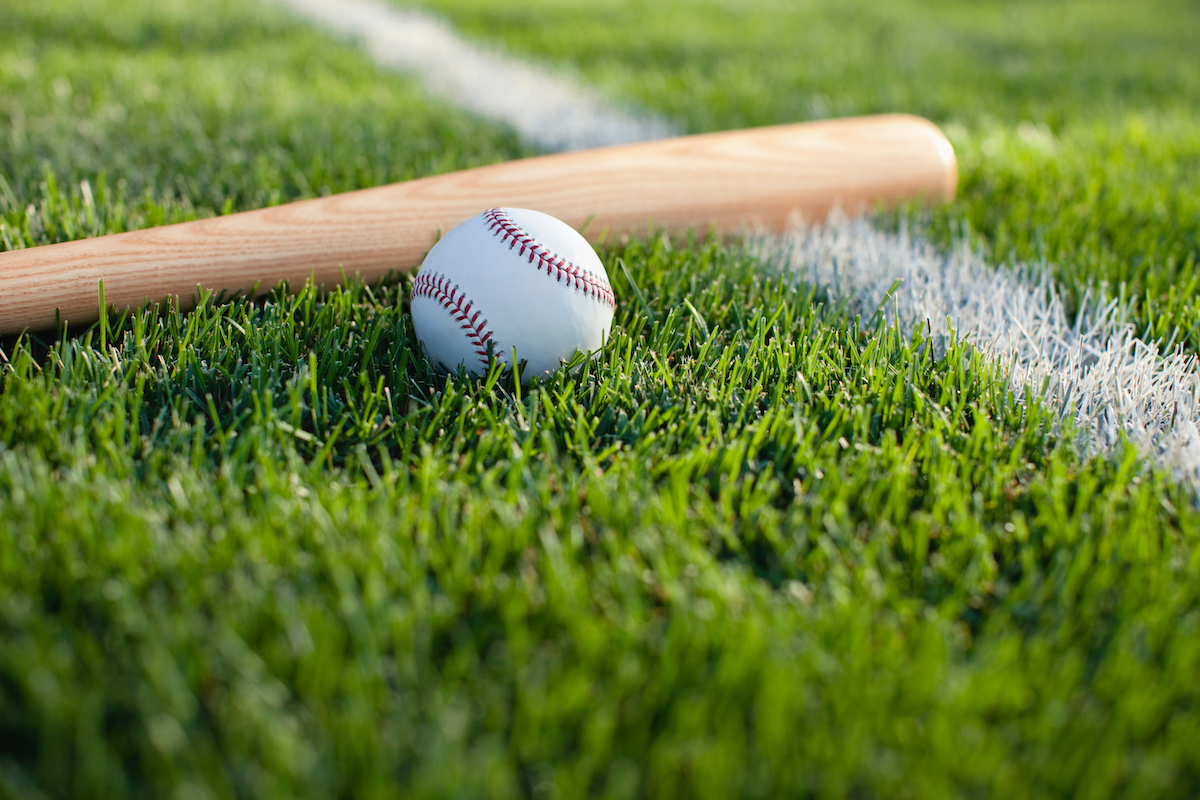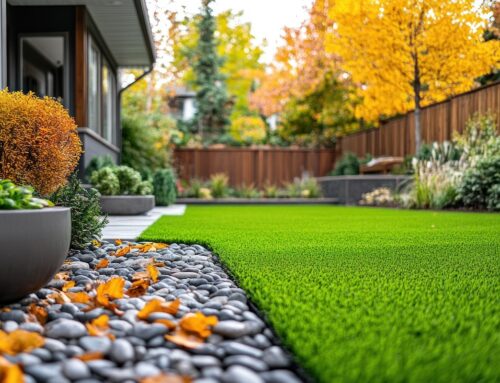Last Updated on November 3, 2023 by ReTurf
When it comes to selecting the right surface for sports fields, playgrounds, or even residential lawns, the debate between artificial turf and AstroTurf often surfaces. While both serve similar purposes, there are distinctions that can influence a buyer’s decision. This guide aims to elucidate the differences between artificial turf and AstroTurf, helping consumers make an informed choice based on their specific needs.
Artificial turf, a broader category, refers to synthetic fibers made to mimic the look and feel of natural grass. It’s a versatile material used in various settings, from sports arenas to residential landscapes. On the other hand, AstroTurf is a brand name that has become synonymous with artificial turf but represents a specific product line within the artificial turf market.
Enter ReTURF, a company with a unique approach to artificial turf. For over two decades, ReTURF has been addressing a critical question in the industry: “What do we do with artificial turf material when it reaches the end of its useful life?” Their answer is a sustainable model that recovers and repurposes used artificial turf from sports fields and stadiums across the nation. By offering high-quality, used artificial turf in two grades, Basic and Premium, ReTURF presents an eco-friendly and cost-effective solution for a variety of applications.
Through this guide, we’ll navigate the nuances of artificial turf and AstroTurf, delve into ReTURF’s innovative solutions, and equip you with the knowledge to choose the right turf for your project. Whether you’re outfitting a sports facility or enhancing your backyard, understanding your options is the first step toward making a decision you’ll be satisfied with for years to come.
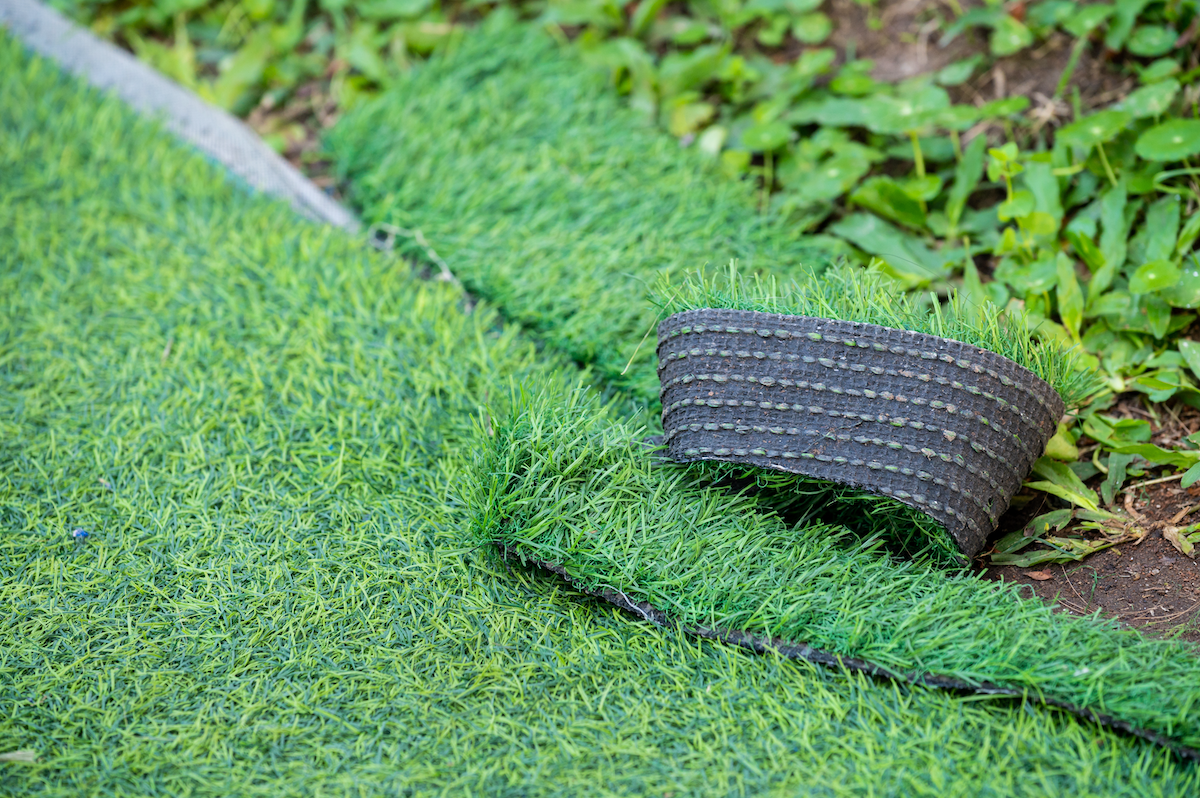
Understanding Artificial Turf
Artificial turf, also known as synthetic grass, is a surface of synthetic fibers made to look and feel like natural grass. It was first introduced in the 1960s and gained prominence with the installation of AstroTurf in the Houston Astrodome in 1966. Since then, artificial turf has evolved significantly, both in terms of material and technology, leading to more realistic and functional surfaces.
Types of Artificial Turf: There are several types of artificial turf, each suited to different applications. Nylon turf, known for its durability, is often used in high-traffic areas like sports fields. Polyethylene turf, which closely resembles natural grass, is popular for landscaping and recreational areas. Polypropylene turf is a cost-effective option suitable for indoor facilities and light-use outdoor spaces.
Benefits of Using Artificial: Turf The benefits of artificial turf are numerous. Its durability stands out, as it can withstand heavy use and extreme weather conditions without the need for rest periods, which are necessary for natural grass. Maintenance is considerably lower than that of natural grass, requiring no mowing, watering, or fertilizing, which translates into savings on water and maintenance costs. Versatility is another advantage; artificial turf can be installed in places where natural grass might not thrive, such as shaded areas or rooftops. Additionally, it offers a consistent playing surface for sports, contributing to fewer injuries caused by uneven terrain.
Potential Downsides: Despite its advantages, artificial turf is not without its downsides. Heat retention is a concern, as the synthetic materials can absorb heat, making the surface hotter than natural grass. This can be uncomfortable for users and require additional cooling methods, like watering the surface before use. Environmental concerns also exist, primarily due to the materials used in manufacturing and the disposal of old turf. While efforts are being made to recycle and repurpose used turf, it’s an area where the industry continues to seek improvements.
Artificial turf offers a practical and versatile alternative to natural grass, with significant benefits in durability, maintenance, and versatility. However, considerations around heat retention and environmental impact should be factored into the decision-making process. As we explore further, we’ll see how companies like ReTURF are addressing some of these challenges by providing sustainable options in the artificial turf market.
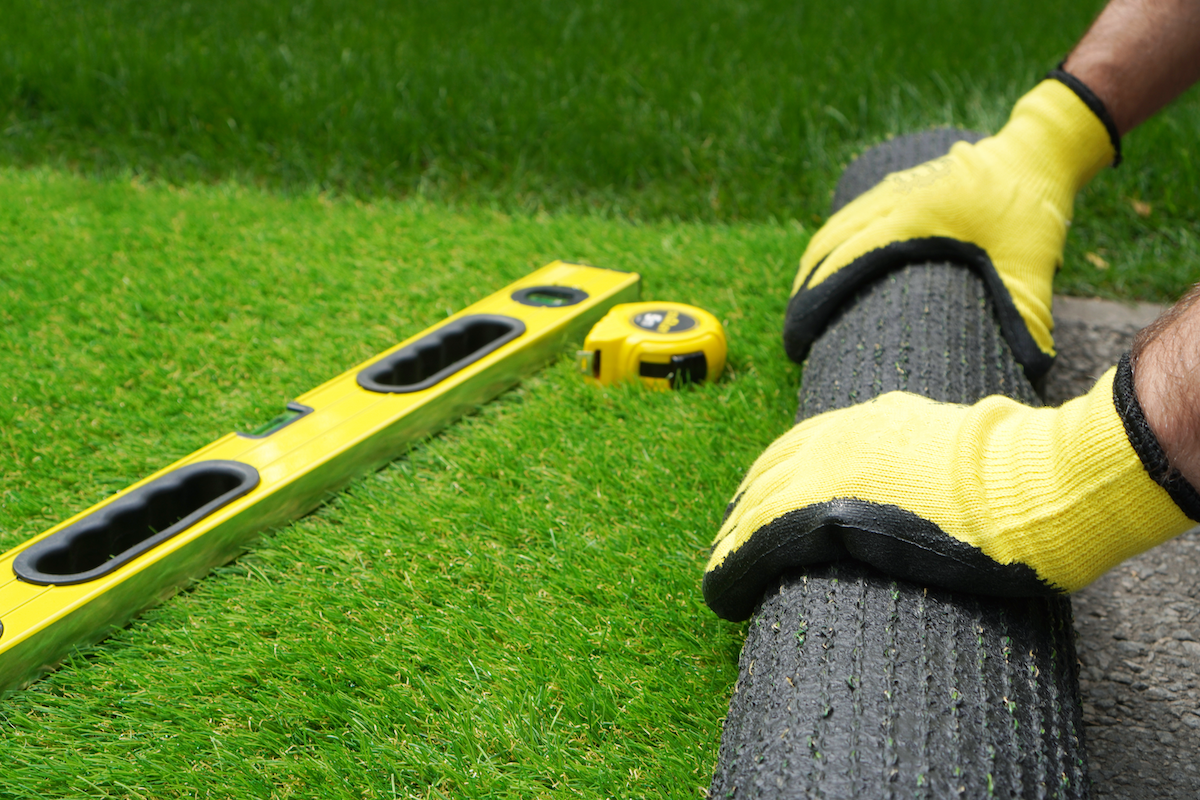
AstroTurf: A Pioneering Brand
AstroTurf holds a storied place in the history of artificial turf. Its journey began in the mid-1960s when it was first installed in the Houston Astrodome, marking a revolutionary change in the way sports surfaces were conceived. Initially dubbed “ChemGrass,” it was later renamed AstroTurf after its famous installation, and the brand has since become synonymous with artificial turf.
Characteristics of AstroTurf have evolved over the years. Initially, it was known for its durability and low maintenance compared to natural grass. Today, AstroTurf offers a range of products featuring varied textures, pile heights, and infill options designed to cater to different sports and activities. The brand has focused on innovation, developing systems that offer improved shock absorption, traction, and realistic playability.
When comparing AstroTurf to generic artificial turf, several factors come into play. AstroTurf has a legacy of being a pioneer in the industry, which means extensive experience and a commitment to research and development. Their products are often at the forefront of technological advances in the field. However, generic artificial turf products have also made significant strides in quality and variety, offering consumers a broader range of choices, often at different price points.
Popular uses of AstroTurf are predominantly in the sports sector. From football and baseball fields to golf courses and tennis courts, AstroTurf’s specialized products cater to the specific needs of each sport. Additionally, its applications have expanded to include landscaping, playgrounds, and recreational areas, demonstrating the brand’s versatility.
AstroTurf’s history as a pioneer in the industry, its commitment to innovation, and the wide range of applications for its products have cemented its status as a leading name in artificial turf. As we continue to explore the world of artificial turf, the influence and contributions of AstroTurf remain an integral part of the narrative.
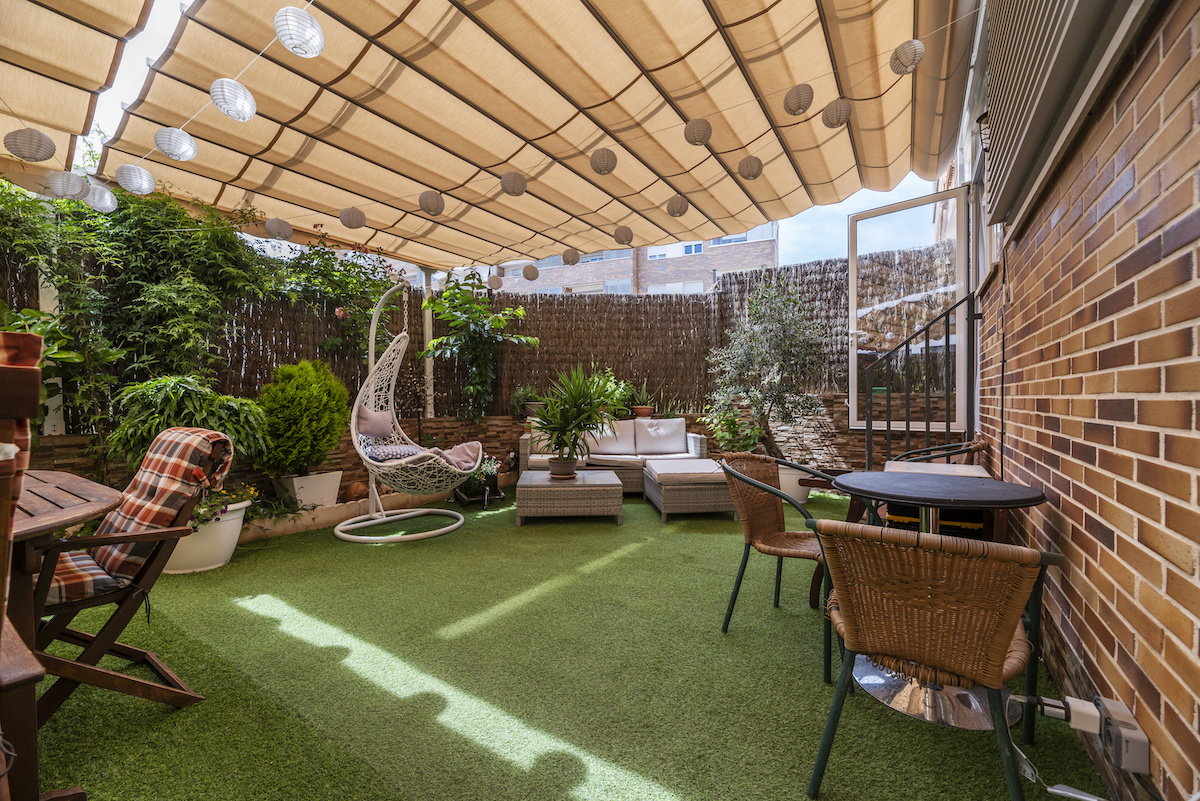
ReTURF’s Approach to Artificial Turf
In the expansive field of artificial turf, ReTURF distinguishes itself with an approach that intertwines sustainability with innovation. At the heart of ReTURF’s business model lies a commitment to environmental stewardship and a vision to redefine the lifecycle of artificial turf. For over two decades, ReTURF has confronted a pressing industry question: “What becomes of artificial turf once it has served its initial purpose?” Their response has not only provided an answer but has also paved the way for a more sustainable practice within the industry.
ReTURF’s practices revolve around the recovery, reconditioning, and repurposing of used artificial turf from sports fields and stadiums nationwide. This model significantly reduces the volume of artificial turf occupying landfill space, addressing a critical environmental concern. By extending the life of artificial turf, ReTURF contributes to the reduction of waste and the conservation of resources that would otherwise be utilized in the production of new turf.
The company offers two primary product lines: Basic Turf and Premium Turf. Basic Turf, typically sourced from 10-12 year old sports fields, presents an affordable option that retains the essential characteristics needed for various applications. Premium Turf, on the other hand, includes lightly used sports field turf or turf with special features such as a ‘thatch’ or ‘root zone’. These special features imbue the turf with attributes that closely resemble natural grass, offering a blend of comfort, aesthetic appeal, and functional utility.
What sets ReTURF’s products apart are the unique characteristics developed through years of use. The process of removing infill from used turf often results in fibers that are fibrillated and curled, a natural consequence of exposure and foot traffic. This gives the turf a degree of cushioning and a softer, more natural appearance compared to new sports field turf, which typically requires extensive brushing and infill to achieve a grass-like look. The outcome is a product that not only serves a practical purpose but also delivers a more organic feel, making it an appealing choice for a range of applications.
ReTURF’s approach is a testament to the potential of reimagining the end-of-life phase for artificial turf. By focusing on the reclamation and rejuvenation of used turf, the company not only offers a cost-effective alternative but also champions an environmentally conscious model that resonates with the growing demand for sustainable solutions. As ReTURF continues to process more used artificial turf annually than any other facility in North America, its role in shaping a greener future for the industry becomes increasingly evident.

Choosing the Right Turf for Your Needs
Navigating the landscape of artificial turf requires a keen eye for detail and a clear understanding of one’s own needs and constraints. It’s not just about picking a product; it’s about aligning your choice with a spectrum of factors that collectively define the suitability of the turf for your specific application.
In this selection process, ReTURF emerges as a unique player with offerings that transcend the conventional. Its products are not just recycled; they’re reincarnated with a narrative of their own, a past life that adds depth to their present application. This aspect of ReTURF’s turf is not merely a novelty; it’s a testament to the resilience and adaptability of the material.
Cost-effectiveness is often a primary concern, and rightfully so. Budgets are not limitless, and finding a solution that respects financial boundaries without compromising on quality is a delicate balance. ReTURF strikes this balance with finesse, presenting options that are gentle on the wallet but robust in performance.
But the appeal of ReTURF’s offerings extends beyond the monetary. Each product is a mosaic of unique characteristics. Whether it’s the soft, curled fibers that add a touch of comfort or the thatch that lends an authentic grass-like feel, these features are not just cosmetic; they’re functional, enhancing the experience of those who tread upon them.
The variety within ReTURF’s portfolio caters to a wide audience. For the sports enthusiast, Game-Marked Turf brings the vigor of the game into personal spaces. For those seeking a dash of creativity, Logo Turf offers a canvas of vibrant colors and patterns. And for purists, the All-Green Turf provides an unblemished expanse of greenery, a classic choice for various settings.
The selection of turf is not a linear path but a multidimensional decision-making process. It’s about weighing the pros and cons, balancing desires with practicalities, and ultimately finding a product that resonates with your vision. ReTURF facilitates this journey with its diverse, cost-effective, and character-rich options, each poised to transform spaces with a blend of functionality and style.
Real-world Applications of ReTURF Products
The versatility of ReTURF products is showcased through their adaptability in a variety of real-world applications. Athletic training facilities are one of the primary beneficiaries, where the resilience and durability of ReTURF’s turf provide a consistent and reliable surface for rigorous training routines. Whether it’s for batting cages or crossfit floors, the performance of the turf under stress and strain is commendable.
For our four-legged friends, animal play areas and kennels outfitted with ReTURF’s turf offer a comfortable and safe environment. The turf’s softness and cushion-like properties are gentle on paws, making it an ideal choice for pet owners who prioritize the comfort and well-being of their pets.
Residential landscaping is another realm where ReTURF products shine. Homeowners seeking a low-maintenance yet aesthetically pleasing lawn find a perfect ally in ReTURF’s turf. Its ability to retain a lush appearance throughout the seasons, without the need for watering or mowing, is a significant draw.
Recreational spaces, be it public parks or private retreats, benefit from the all-weather durability and visual appeal of ReTURF’s turf. From pool decks to picnic spots, the turf’s versatility allows it to blend seamlessly into various recreational settings, enhancing the user experience.
ReTURF’s turf finds its way into specialty uses, underscoring its adaptability. Truck bed liners, floor mats, and garage floor coverings are just a few examples where the turf’s durability and ease of maintenance are highly valued.
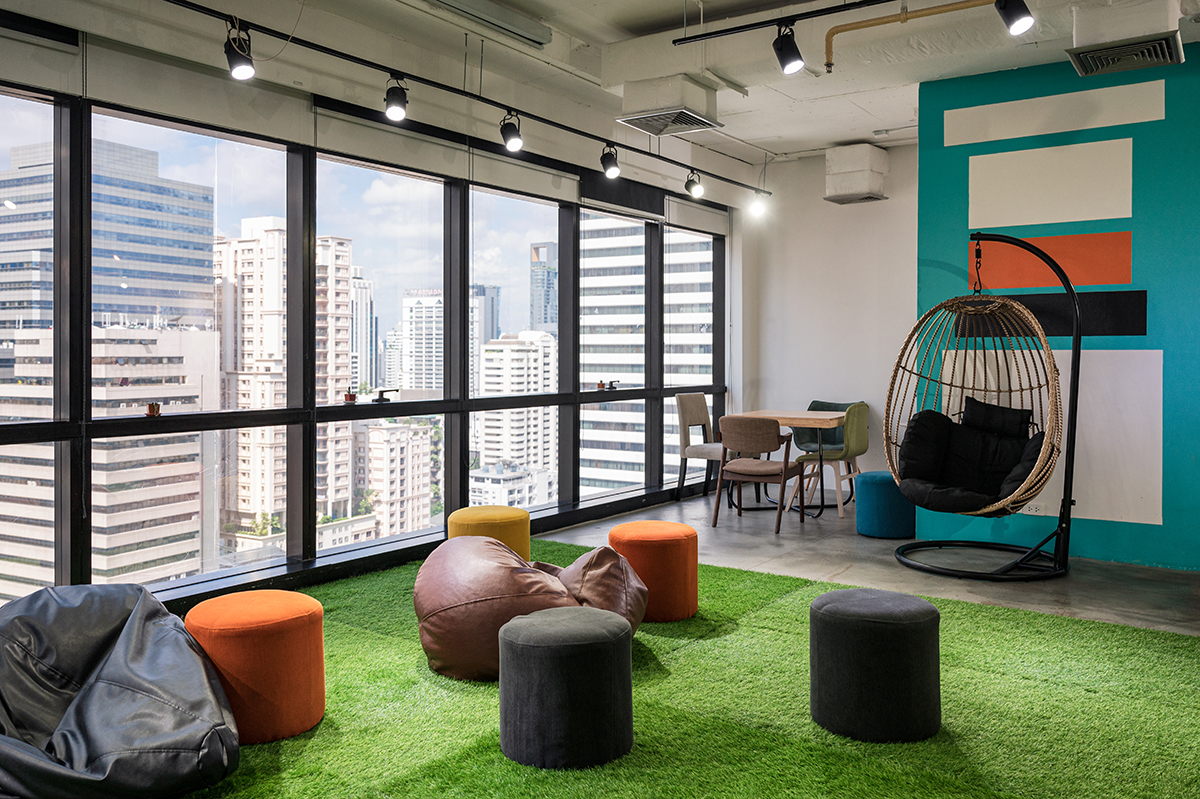
How to Get Started with ReTURF
Embarking on a project with ReTURF is a journey marked by ease and customization. The first step is a consultation process, where potential clients are encouraged to discuss their needs and visions. This collaborative approach ensures that clients are matched with the most suitable product for their specific applications.
Choosing the product is an exciting phase, as clients explore the array of options available. From Logo Turf to All-Green Turf, the selection is tailored to the client’s preferences and functional requirements. Customization options further refine the product, ensuring that the final choice is a perfect fit for the intended space.
Installation and maintenance are the final pieces of the puzzle. ReTURF provides guidance and tips to ensure that the turf is installed correctly and maintained with ease. This support is integral to the longevity and performance of the turf, allowing clients to enjoy their spaces with minimal fuss and maximum satisfaction.
Making Your Turf Choice with Confidence
In the landscape of artificial turf, understanding the nuances between general artificial turf options and the pioneering AstroTurf brand is key to making an informed decision. While AstroTurf has a storied legacy and continues to innovate, the broader market of artificial turf offers a spectrum of choices that cater to diverse needs and preferences. Amidst this, ReTURF emerges as a unique value proposition, championing sustainability, cost-effectiveness, and versatility. Their commitment to repurposing used turf not only provides a greener solution but also delivers a product rich in history and character.
If you’re contemplating which turf to choose for your project, ReTURF’s expertise and tailored solutions are just a consultation away. We encourage you to reach out and request a callback for personalized advice that aligns with your vision and requirements. Embark on your turf journey with confidence, knowing you have a partner in ReTURF that values quality, sustainability, and customer satisfaction. To get started, contact ReTURF.

